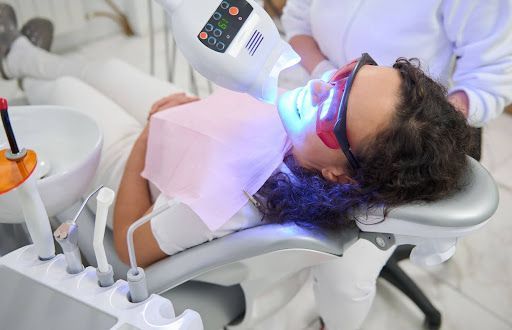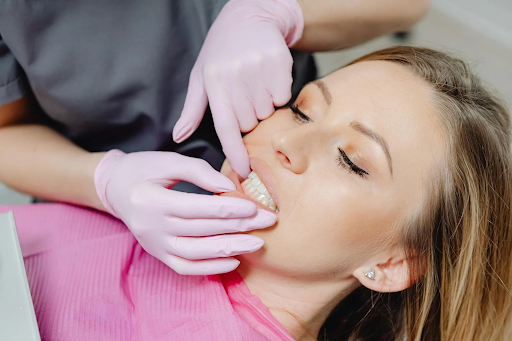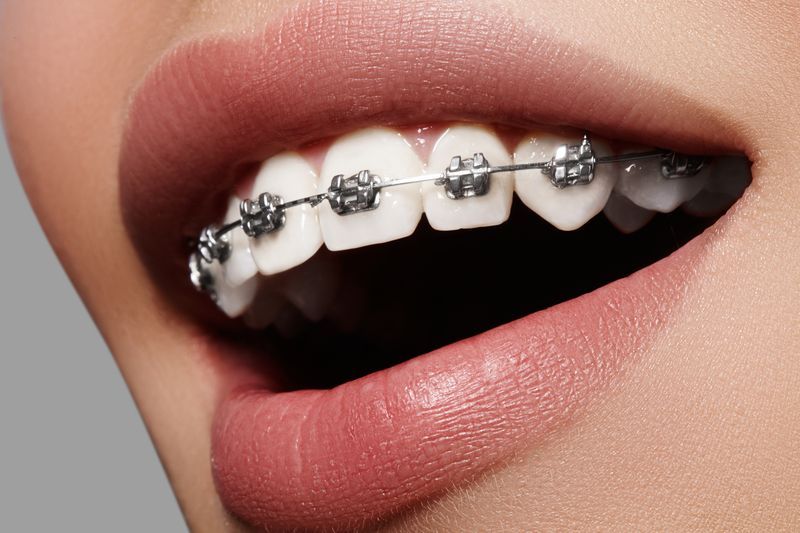Oral Hygiene with Braces: Tools and Tips
Maintaining clean teeth is a challenge many face, especially for those who wear braces. When you have braces, bits of food easily get trapped, leading to plaque buildup and potential dental issues. But with the right tools and methods, keeping your mouth healthy becomes much simpler.
Understanding the Complexity of Brushing with Braces
Brushing your teeth is a straightforward task that many of us perform habitually, hardly giving it a second thought. The introduction of braces into this daily routine can transform it into a complex, often challenging task. Braces, with their wires and brackets, create numerous nooks and crannies that can trap food particles and plaque, making thorough cleaning more difficult than before. As such, maintaining optimal oral hygiene becomes a task requiring more attention and care than usual.
The significance of adopting effective brushing techniques and tools cannot be overstated for those with braces. The main goal of such practices is to prevent common orthodontic issues that can arise due to inadequate care. Plaque buildup, gingivitis, and even tooth decay are frequent concerns, as the structure of braces creates ideal conditions for these problems. These issues not only pose risks to oral health but can also impact the overall effectiveness and duration of the orthodontic treatment.
Studies and statistics from reputable sources like the
American Dental Association emphasize the importance of meticulous oral hygiene for individuals with braces. For instance, the ADA notes that patients with braces are more susceptible to gingivitis, a condition marked by inflamed and bleeding gums, if proper brushing and flossing practices are not observed. The risk of plaque buildup is significantly higher in these patients, necessitating a more diligent approach to oral care to prevent potential complications such as periodontitis or tooth decay.
Understanding the complexities of brushing with braces sets the foundation for implementing effective oral hygiene practices. It underscores the necessity of not only adjusting how we brush but also the tools we use to maintain cleanliness around the brackets and wires. The journey towards a beautiful smile is a joint endeavor between patients and their orthodontic professionals, requiring commitment and the right approach to oral care. By recognizing these challenges and adapting accordingly, individuals with braces can ensure the health and beauty of their teeth throughout their orthodontic treatment.
Selecting the Right Tools for Effective Brushing with Braces
Acquiring the correct tools is pivotal for maintaining impeccable oral hygiene with braces. A significant component of this toolkit is the orthodontic toothbrush. Designed specifically for cleaning around braces, these toothbrushes come with soft bristles that are gentle on the gums and effective in navigating the intricate structure of brackets and wires. The soft bristles minimize the risk of damaging the braces or irritating the gums, ensuring a thorough and safe cleaning process.
Interdental brushes and water flossers play crucial roles in reaching areas that are typically challenging to clean. Interdental brushes excel in removing food particles and plaque from between wires and teeth, while water flossers use a stream of water to clean effectively around the braces and under the gumline. These tools complement the brushing process, addressing the complexities braces introduce to oral hygiene routines.
Choosing the right toothpaste is also essential.
Antimicrobial toothpaste can significantly reduce the presence of harmful bacteria in the mouth, while fluoride toothpaste strengthens the enamel and protects against tooth decay. These properties are particularly beneficial for individuals undergoing orthodontic treatment, as they further safeguard oral health.
Step-by-Step Guide to Brushing with Braces
The brushing process with braces demands precision and care. Start by holding the toothbrush at a 45-degree angle to the gums, ensuring that the bristles can reach the space under the wires and around the brackets. Use gentle, circular motions to clean each tooth, taking extra care to brush all surfaces thoroughly. The recommended duration for brushing is at least two minutes, twice a day, to ensure maximum cleanliness and protection against plaque buildup.
Overcoming Common Challenges
Navigating around brackets and enduring discomfort while brushing are common challenges individuals face when brushing with braces. To alleviate these issues, orthodontic professionals recommend using tools like orthodontic wax to cover sharp edges that may cause irritation. Adjusting the brushing angle and using aids such as a mirror can help in more accurately targeting hard-to-reach areas.
Anecdotes from both patients and professionals shed light on personal strategies that have proven effective. For instance, one patient discovered that incorporating a fluoride mouth rinse into their routine helped address areas their toothbrush couldn’t reach efficiently, significantly reducing the incidence of cavities during their treatment.
Embracing these techniques and tools transforms the daunting task of brushing with braces into a manageable and effective routine. By doing so, individuals can ensure their path to a perfect smile is both healthy and happy.
Additional Care Tips and Practices
Maintaining optimal oral health during orthodontic treatment extends beyond just selecting the right toothbrush or mastering the perfect brushing technique. Incorporating mouthwash with fluoride can play a pivotal role in fortifying teeth against the threat of decay. Fluoride mouthwashes help in remineralizing enamel, ensuring an added layer of protection for teeth exposed to the constant threat of plaque buildup around braces.
Regular check-ups with an orthodontist are not just for adjusting wires and assessing progress; they are also crucial for reviewing and adapting oral hygiene practices. These visits can provide an opportunity for orthodontic professionals to supply tailored advice on brushing techniques and tools, ensuring that patients are equipped with the knowledge to maintain their oral health effectively. As treatment progresses and the structure of braces changes, so too might the approach to oral care, underscoring the importance of ongoing professional guidance.
Another aspect that demands attention is diet. Foods high in sugars and starches can exacerbate the risk of plaque formation and tooth decay, particularly around the brackets and wires of braces where particles are more likely to be trapped. Limiting the consumption of such foods, and opting for a diet rich in meat, vegetables, and water, can significantly reduce the likelihood of oral health complications during orthodontic treatment.
Wrapping Up: The Long-Term Impact of Proper Oral Hygiene with Braces
The journey of orthodontic treatment is a significant investment in one's smile and overall dental health. The effectiveness of this treatment is not solely dependent on the mechanical adjustments carried out by orthodontic professionals. A crucial component of this process is the commitment of the patient to maintain rigorous oral hygiene practices. The diligence with which an individual follows through on daily brushing and flossing, coupled with regular orthodontist visits and mindful eating habits, greatly influences the long-term success of their treatment.
The connection between healthy teeth and gums and the effectiveness of braces is undeniably strong. Inflammation, decay, and other oral health issues can obstruct the path to a perfect smile, prolonging treatment or leading to unsatisfactory results. Therefore, the effort invested in maintaining excellent oral hygiene during braces treatment not only ensures the health of the gums and teeth but also secures the desired orthodontic outcomes.
In conclusion, while braces are a remarkable tool in achieving a beautiful and aligned smile, the responsibility of caring for them rests squarely on the patient. Embracing the right tools and practices, as outlined throughout this guide, ensures that the investment in braces pays dividends in the form of a healthy, vibrant smile. Let the journey toward achieving your perfect smile be guided by the commitment to exceptional oral hygiene—it is an endeavor that promises to yield lifelong benefits.
Ready to ensure your orthodontic journey is as smooth and effective as possible? Contact McAllister Orthodontics, we provide comprehensive guidance on maintaining optimal oral hygiene throughout your treatment.












